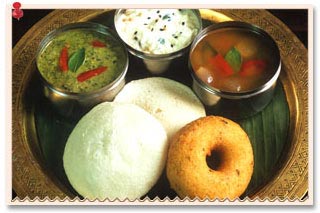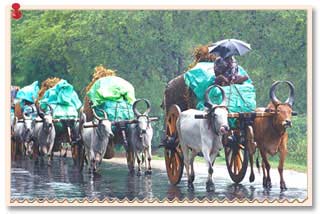Chennai Map

Map is a very essential commodity of the tourism kit of any traveler. This is because the map consists of a host of vital information. Just by having a look at it, you will get all the fast facts and instant information you would want to know at that instance. Therefore, if you are on a trip to the Chennai city of India, do not forget to keep a city map along with you. The map contains vital information like names of important roads, names of important landmarks, location of railway station, bus stand, airport, hotels, restaurants etc. All this information will prove to be of great help, while you are planning to tour around the city of Madras. You can find a map at places like book stores, tourist offices and travel agents.
 Tamil Nadu is known for its hospitality and traditional food. People in the state are of the belief that serving food to others is a service to mankind. This fortifies the fact that your eating experience in the city will definitely be an unforgettable one. Specifically talking about the cuisine of Chennai, the city offers a wide variety in terms of different types of dishes. The delectable South Indian savories are truly a treat for the foodies. There is a plethora of items for both vegetarians as well as non vegetarians.
Tamil Nadu is known for its hospitality and traditional food. People in the state are of the belief that serving food to others is a service to mankind. This fortifies the fact that your eating experience in the city will definitely be an unforgettable one. Specifically talking about the cuisine of Chennai, the city offers a wide variety in terms of different types of dishes. The delectable South Indian savories are truly a treat for the foodies. There is a plethora of items for both vegetarians as well as non vegetarians.
This can be made out from the number of restaurants and eating places in Madras. The staple diet of the people of Chennai is rice, which is served with other supplementary food items. The regular South Indian meal, which comprises of steamed rice along with a variety of vegetable dishes like sambar, dry curry, rasam and kootu, is served on a banana leaf. At times, it is also accompanied by crisp appalams. This is followed by a round of rice and curd or buttermilk or both. Finally, the meal concludes with a small banana and a few betel leaves and nuts.
For non vegetarians, the platter consists of rice, along with curries or dishes cooked with mutton, chicken or fish. The breakfast and evening snacks mainly include idly (steamed rice cakes), dosai (pancake made from batter of rice) and lentils crisp fried on a pan, vada (deep fried doughnuts made from a batter of lentils), pongal (rice and lentils boiled together, seasoned with ghee, cashew nuts, pepper and cumin seed) and uppuma (cooked semolina seasoned in oil with mustard, pepper, cumin seed and dry lentils.).
All the above dishes are served with coconut chutney, sambar (seasoned lentil broth) and mulaga podi (powdered mix of several dried lentils eaten with oil). Apart from this, coffee is a must for all the South Indians. Nothing can match the rich taste and aroma of a Tamilian Filter coffee. The coffee beans are Arabic in origin, which are roasted and then powdered to achieve the right taste. A bit of chicory is also added to enhance the aroma. It is then put in a filter set, along with hot water, to prepare a dark liquid called decoction. A portion of this is mixed with milk and sugar to get the perfect coffee.
 Chennai, the capital city of Tamil Nadu, is situated in the tropical zone of climate. It is due to this reason that the city experiences a hot and humid weather. The city also experiences all the three major seasons of summers, winters and monsoons. However, there is very slight variation amongst all of them. This is due to its location near equator. As a result, Madras city experiences hot climate throughout the year. During the summer months, which are between March and October, the climate is extremely hot.
Chennai, the capital city of Tamil Nadu, is situated in the tropical zone of climate. It is due to this reason that the city experiences a hot and humid weather. The city also experiences all the three major seasons of summers, winters and monsoons. However, there is very slight variation amongst all of them. This is due to its location near equator. As a result, Madras city experiences hot climate throughout the year. During the summer months, which are between March and October, the climate is extremely hot.
April and May are the hottest months of the year, with mercury crossing 40o C mark. The scorching heat of the sun is nearly unbearable restricting you to your houses. With a contrast, the places near the sea coast remain warm and humid. The cool breeze during the night time provides respite to the residents from the high temperature. During the monsoons, which means during the months of June to September, Chennai receives ample rainfall.
Monsoon arrives with the advent of the Northeast Monsoon Winds. The rain showers are a delight, as they wash away the heat of the otherwise hot climate. People are seen rejoicing in the rain, with umbrellas in their hands. Moreover, as the city is located near the sea side; it receives moderate rainfall of about 1,300 mm throughout the year. As a result, it is necessary to keep an umbrella handy, as you never know when you might need it.
The winters are very short lived in Chennai. They occur during the months of November to February. This is the most pleasant time of the year, best suited to visit the city. The average temperature of Madras at this time is around 24o C and never falls below 20o C. Winters also receive moderate rainfall, making the weather pleasurable and comfortable to roam around.
Chennai Cuisine
 Tamil Nadu is known for its hospitality and traditional food. People in the state are of the belief that serving food to others is a service to mankind. This fortifies the fact that your eating experience in the city will definitely be an unforgettable one. Specifically talking about the cuisine of Chennai, the city offers a wide variety in terms of different types of dishes. The delectable South Indian savories are truly a treat for the foodies. There is a plethora of items for both vegetarians as well as non vegetarians.
Tamil Nadu is known for its hospitality and traditional food. People in the state are of the belief that serving food to others is a service to mankind. This fortifies the fact that your eating experience in the city will definitely be an unforgettable one. Specifically talking about the cuisine of Chennai, the city offers a wide variety in terms of different types of dishes. The delectable South Indian savories are truly a treat for the foodies. There is a plethora of items for both vegetarians as well as non vegetarians. This can be made out from the number of restaurants and eating places in Madras. The staple diet of the people of Chennai is rice, which is served with other supplementary food items. The regular South Indian meal, which comprises of steamed rice along with a variety of vegetable dishes like sambar, dry curry, rasam and kootu, is served on a banana leaf. At times, it is also accompanied by crisp appalams. This is followed by a round of rice and curd or buttermilk or both. Finally, the meal concludes with a small banana and a few betel leaves and nuts.
For non vegetarians, the platter consists of rice, along with curries or dishes cooked with mutton, chicken or fish. The breakfast and evening snacks mainly include idly (steamed rice cakes), dosai (pancake made from batter of rice) and lentils crisp fried on a pan, vada (deep fried doughnuts made from a batter of lentils), pongal (rice and lentils boiled together, seasoned with ghee, cashew nuts, pepper and cumin seed) and uppuma (cooked semolina seasoned in oil with mustard, pepper, cumin seed and dry lentils.).
All the above dishes are served with coconut chutney, sambar (seasoned lentil broth) and mulaga podi (powdered mix of several dried lentils eaten with oil). Apart from this, coffee is a must for all the South Indians. Nothing can match the rich taste and aroma of a Tamilian Filter coffee. The coffee beans are Arabic in origin, which are roasted and then powdered to achieve the right taste. A bit of chicory is also added to enhance the aroma. It is then put in a filter set, along with hot water, to prepare a dark liquid called decoction. A portion of this is mixed with milk and sugar to get the perfect coffee.
Chennai Weather
 Chennai, the capital city of Tamil Nadu, is situated in the tropical zone of climate. It is due to this reason that the city experiences a hot and humid weather. The city also experiences all the three major seasons of summers, winters and monsoons. However, there is very slight variation amongst all of them. This is due to its location near equator. As a result, Madras city experiences hot climate throughout the year. During the summer months, which are between March and October, the climate is extremely hot.
Chennai, the capital city of Tamil Nadu, is situated in the tropical zone of climate. It is due to this reason that the city experiences a hot and humid weather. The city also experiences all the three major seasons of summers, winters and monsoons. However, there is very slight variation amongst all of them. This is due to its location near equator. As a result, Madras city experiences hot climate throughout the year. During the summer months, which are between March and October, the climate is extremely hot.April and May are the hottest months of the year, with mercury crossing 40o C mark. The scorching heat of the sun is nearly unbearable restricting you to your houses. With a contrast, the places near the sea coast remain warm and humid. The cool breeze during the night time provides respite to the residents from the high temperature. During the monsoons, which means during the months of June to September, Chennai receives ample rainfall.
Monsoon arrives with the advent of the Northeast Monsoon Winds. The rain showers are a delight, as they wash away the heat of the otherwise hot climate. People are seen rejoicing in the rain, with umbrellas in their hands. Moreover, as the city is located near the sea side; it receives moderate rainfall of about 1,300 mm throughout the year. As a result, it is necessary to keep an umbrella handy, as you never know when you might need it.
The winters are very short lived in Chennai. They occur during the months of November to February. This is the most pleasant time of the year, best suited to visit the city. The average temperature of Madras at this time is around 24o C and never falls below 20o C. Winters also receive moderate rainfall, making the weather pleasurable and comfortable to roam around.
No comments:
Post a Comment